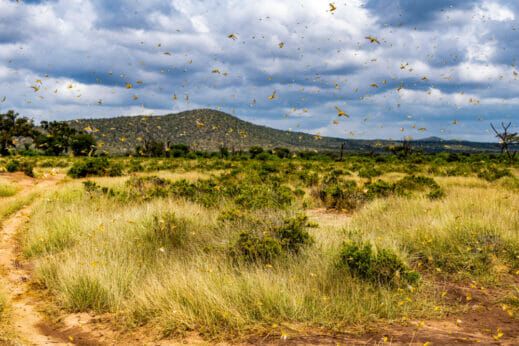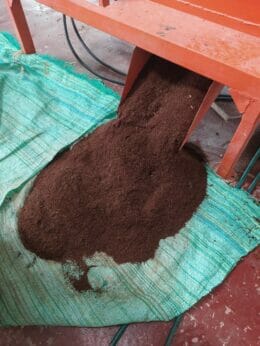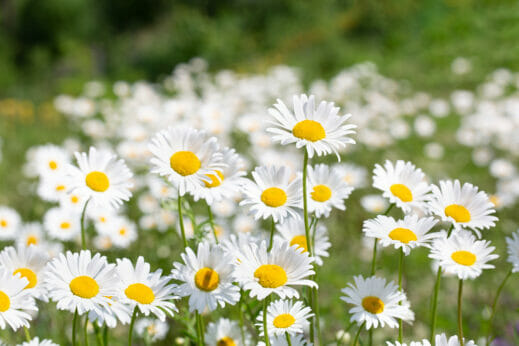Following a multi-year locust plague, organizers in Kenya are making the most of the pestilential swarm.

They say when life throws you lemons, you make lemonade. But what happens when life throws swarms of desert locusts your way? You could make fertilizer from those locusts, as a team of innovators in Kenya demonstrated after a devastating invasion.
Running from 2018 to early 2022, the massive locust outbreak that hit parts of Eastern Africa and the Middle East destroyed hundreds of thousands of acres of crops and posed a severe food security threat to about 3 million people.
But research on desert locusts has revealed an interesting fact: The voracious insects have a rich composition of nitrogen and other macro-nutrients that enrich soils and help to grow crops.
Regenerative agriculture company The Bug Picture (TBP), which is based in Kenya and focused on insect-based sustainability projects, used this information to produce something positive from the pestilential invasion.
“Nobody was prepared for the infestation as we had not had desert locusts for 70 years—there were only stories from those times—so the devastation to people was immense,” Laura Stanford, founder and director of TBP, told us via email. “I have seen the benefits of insects for people and the environment, so I was compelled to take action and see these insects as an opportunity to create a silver lining to the devastation of the infestation. Desert locusts are just clouds of protein and nitrogen flying across the sky at the end of the day, so how could we harvest them? And that is what we went out to discover.”

A swarm of locusts seen at Samburu National Reserve in Kenya. (Photo via Shutterstock)
Through community mobilization and partnerships, TBP came up with an innovative program to harvest and convert desert locusts into compost manure using a rudimentary process of milling and composting. In addition to the desert locust biofertilizer, the company and partners also devised eight animal feed formulations using desert locusts as a base.
In the model adopted by TBP, community members receive payment for every scoop of desert locusts they collect, earning Ksh 50 ($0.46) per kg, making it a win-win for both the fertilizer manufacturer and affected communities.
“Our team and partners chased the swarms across grasslands, forests and savannah [with elephants and the like] on the back of motorbikes by day and worked with communities to harvest them by night,” said Stanford. “In the six weeks that we were on the ground before we were shut down by COVID-19 travel restrictions, close on 4.3 tons of desert locusts were harvested by the communities that we worked with. For us and our partners, we see this as a huge success.”

Milled desert locusts are high in nitrogen. (Photo courtesy of TBP)
Preparation of the fertilizer takes six weeks and involves composting milled desert locusts in a controlled environment, mixed with dried reeds, corn stalks, hay or straw. The mixture is laid in a rainproof area, covered in a layer of forest soil, and turned every three or four days to facilitate composting. Enriching the mix is a combination of molasses dissolved in unchlorinated water. Some water is added to maintain the consistent moisture of clumping but not dripping, as the composting process will stop if the pile dries. The end product is a well-rotted mix that is sweet smelling, integrated and generally dark and uniform in appearance.
Scilla Allen, from the Rumuruti region of Kenya, was among the first to use the fertilizer. She says the results were impressive after applying the locust fertilizer on her plot of land, where she grows pyrethrum, a type of daisy.
“The pyrethrum did very well,” says Allen. “We got much improved quality last year, and though we got affected by the ongoing drought like everybody else, the pyrethrum has survived. I think a lot of it is due to the quality of the compost. Besides pyrethrum, we also used the compost on vegetables and they showed good results. I am very pleased with the results.”

Pyrethrum, which contains a botanical pesticide, has been cultivated in Kenya since the 1920s. (Photo: Shutterstock)
Increasing soil fertility is just one of the aims of the TBP’s project. The hope, according to Stanford, is that boosting nitrogen levels could actually discourage future locust swarms. “This approach would ultimately deter future swarms as locusts are attracted to areas with low nitrogen levels in their soil; that is, overgrazed areas,” she said.
Research has shown that excessive livestock grazing promotes locust outbreaks by lowering plant nitrogen content due to soil degradation. A 2015 study, which cites findings from locust outbreaks in Inner Mongolia, showed that locusts showed preference for and thrived best on low-protein plants found in degraded or heavily grazed pastures, and similar findings have been recorded in outbreaks elsewhere around the world.
Even without being incorporated into compost, desert locust invasions have been shown to boost nitrogen levels in the soil. Over the course of their lives, they divert nitrogen from plants to the soil, and when they die, they are decomposed by microorganisms, releasing nutrients such as nitrogen and carbon, which then become available for plant uptake.
However, the composting process resulted in faster release of the nutrients in the locusts for plants to access, according to tests conducted by TBP. “Also notable is that all locusts used in this composting trial were sprayed, yet only two samples came back with pesticide residue of which neither were Deltamethrin, which is the chemical that they were sprayed with,” observed the researchers. “This creates the hypothesis that composting can result in faster decomposition of the chemicals, therefore reducing their long-term impacts on the environment.”
Although the threat from the recent swarms of pillaging bugs has passed in the Horn Region, TBP is hoping that the success of its project demonstrates the viability of using alternative methods for responding to the locusts and that this approach can be scaled for affected communities in the future.
For Stanford, it was the rapid, all-hands-on-deck response from collaborators and community members that gave this natural disaster its silver lining. “This was all possible through close collaboration with donors and partners who believe that it is possible to innovate towards nature-based solutions in the time of crises, which definitely seemed like a crazy idea until we were doing it.”
What a genius idea!
the article doesn’t explain how they were harvested. by hand, nets, rakes?
Besides being a fertilizer, the locusts could also serve as a delicacy edibles. They were source of food for Middle Eastern people for thousands of years; legend has it that locusts were favorite food of St. John the Baptist.